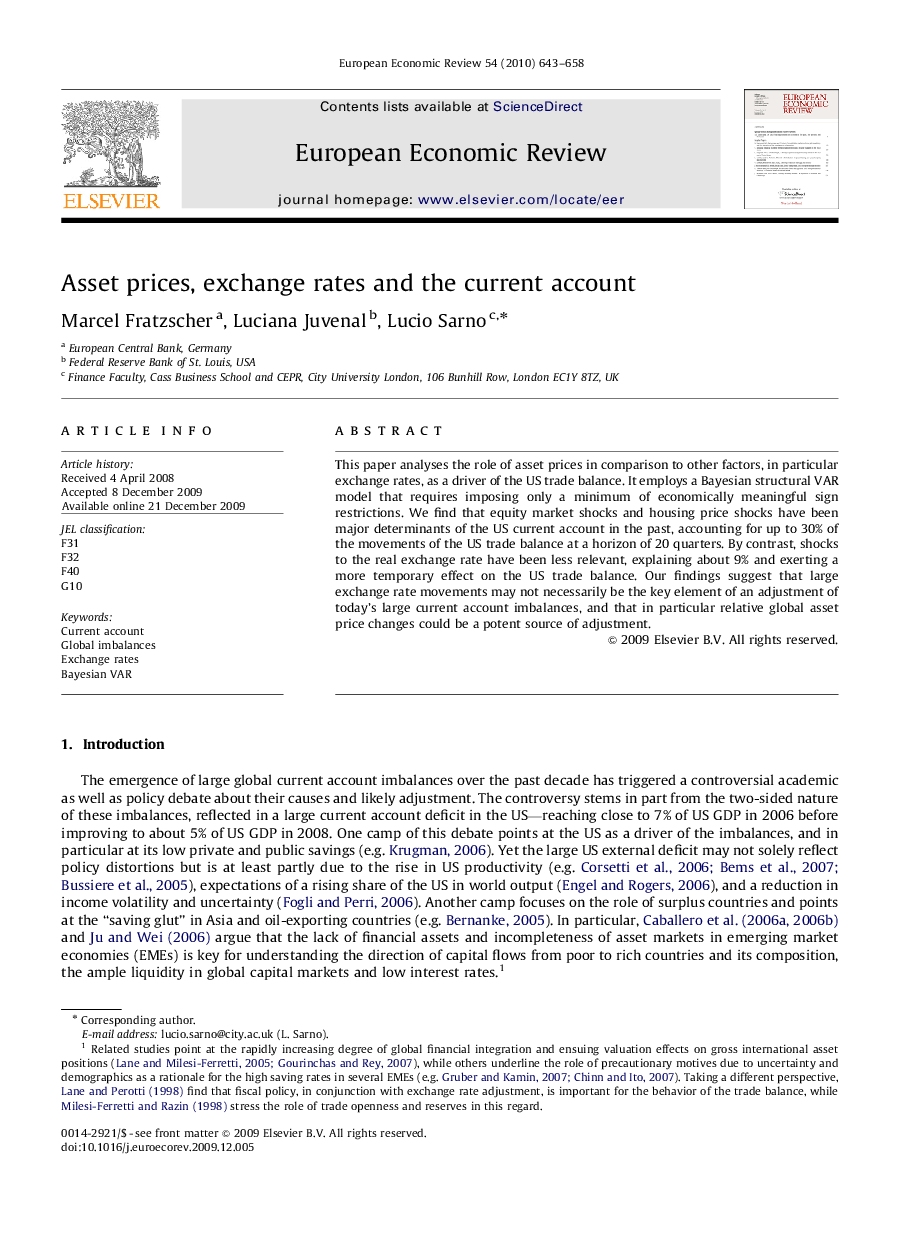| Article ID | Journal | Published Year | Pages | File Type |
|---|---|---|---|---|
| 5067194 | European Economic Review | 2010 | 16 Pages |
Abstract
This paper analyses the role of asset prices in comparison to other factors, in particular exchange rates, as a driver of the US trade balance. It employs a Bayesian structural VAR model that requires imposing only a minimum of economically meaningful sign restrictions. We find that equity market shocks and housing price shocks have been major determinants of the US current account in the past, accounting for up to 30% of the movements of the US trade balance at a horizon of 20 quarters. By contrast, shocks to the real exchange rate have been less relevant, explaining about 9% and exerting a more temporary effect on the US trade balance. Our findings suggest that large exchange rate movements may not necessarily be the key element of an adjustment of today's large current account imbalances, and that in particular relative global asset price changes could be a potent source of adjustment.
Related Topics
Social Sciences and Humanities
Economics, Econometrics and Finance
Economics and Econometrics
Authors
Marcel Fratzscher, Luciana Juvenal, Lucio Sarno,
